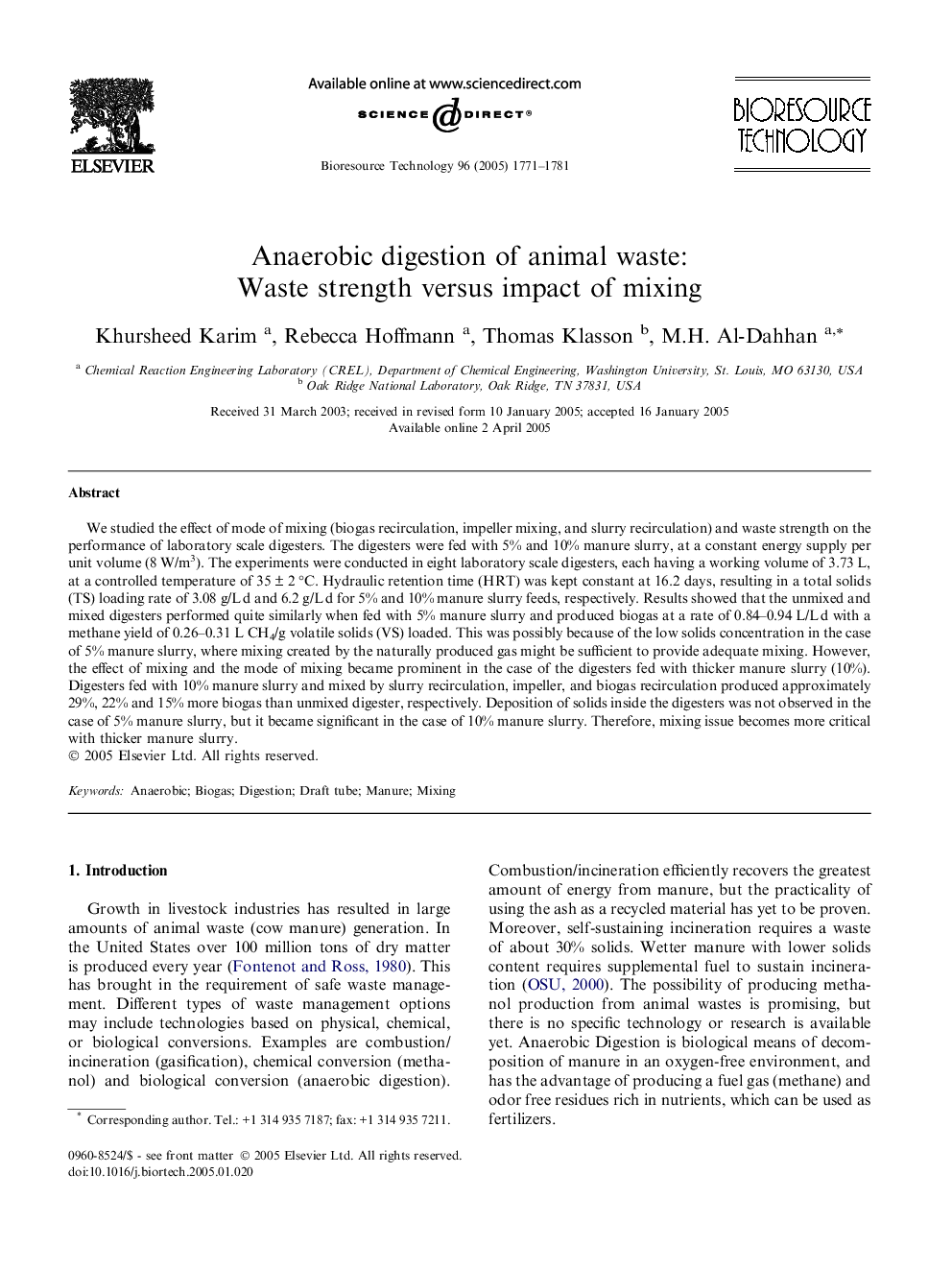| Article ID | Journal | Published Year | Pages | File Type |
|---|---|---|---|---|
| 10396398 | Bioresource Technology | 2005 | 11 Pages |
Abstract
We studied the effect of mode of mixing (biogas recirculation, impeller mixing, and slurry recirculation) and waste strength on the performance of laboratory scale digesters. The digesters were fed with 5% and 10% manure slurry, at a constant energy supply per unit volume (8 W/m3). The experiments were conducted in eight laboratory scale digesters, each having a working volume of 3.73 L, at a controlled temperature of 35 ± 2 °C. Hydraulic retention time (HRT) was kept constant at 16.2 days, resulting in a total solids (TS) loading rate of 3.08 g/L d and 6.2 g/L d for 5% and 10% manure slurry feeds, respectively. Results showed that the unmixed and mixed digesters performed quite similarly when fed with 5% manure slurry and produced biogas at a rate of 0.84-0.94 L/L d with a methane yield of 0.26-0.31 L CH4/g volatile solids (VS) loaded. This was possibly because of the low solids concentration in the case of 5% manure slurry, where mixing created by the naturally produced gas might be sufficient to provide adequate mixing. However, the effect of mixing and the mode of mixing became prominent in the case of the digesters fed with thicker manure slurry (10%). Digesters fed with 10% manure slurry and mixed by slurry recirculation, impeller, and biogas recirculation produced approximately 29%, 22% and 15% more biogas than unmixed digester, respectively. Deposition of solids inside the digesters was not observed in the case of 5% manure slurry, but it became significant in the case of 10% manure slurry. Therefore, mixing issue becomes more critical with thicker manure slurry.
Related Topics
Physical Sciences and Engineering
Chemical Engineering
Process Chemistry and Technology
Authors
Khursheed Karim, Rebecca Hoffmann, Thomas Klasson, M.H. Al-Dahhan,
